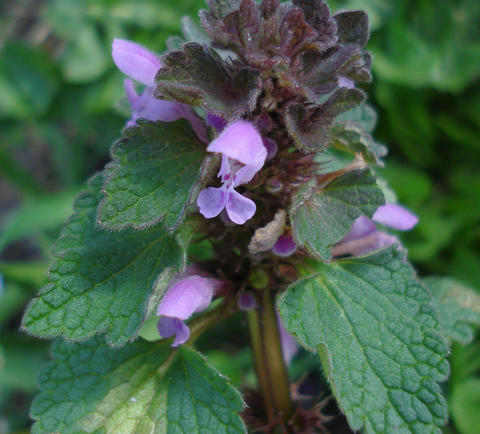Lamium purpureum L.

Red Deadnettle, Purple Deadnettle, or Purple Archangel (Lamium purpureum) is a herbaceous flowering plant native to Europe and Asia.
It grows to 5–20 cm (rarely 30 cm) in height. The leaves have fine hairs, are green at the bottom and shade to purplish at the top; they are 2–4 cm long and broad, with a 1–2 cm petiole (leaf stalk), and wavy to serrated margins.
The zygomorphic flowers are bright red-purple, with a top hood-like petal, two lower lip petal lobes and minute fang-like lobes between.They may be produced throughout the year, including mild weather in winter. This allows bees to gather its nectar for food when few other nectar sources are available. It is also a prominent source of pollen for bees in March/April (in UK), when bees need the pollen as protein to build up their nest.
It is often found alongside Henbit Deadnettle (Lamium amplexicaule), which is easily mistaken for it since they both have similar looking leaves and similar bright purple flowers; they can be distinguished by the stalked leaves of Red Deadnettle on the flower stem, compared to the unstalked leaves of Henbit Deadnettle.
Though superficially similar to a nettle in appearance, it is not related and does not sting, hence the name "deadnettle".
Outside of its native range, it is a common weed of cultivated areas; it is listed as an invasive species in some parts of North America.
Young plants have edible tops and leaves, good in salads or in stirfry as a spring vegetable. If finely chopped it can also be used in sauces, but there is little to recommend about its flavour.
Undyed, the pollen itself is a red colour.
Photographer: Talbot, Michael. Publisher: Talbot, Michael.

